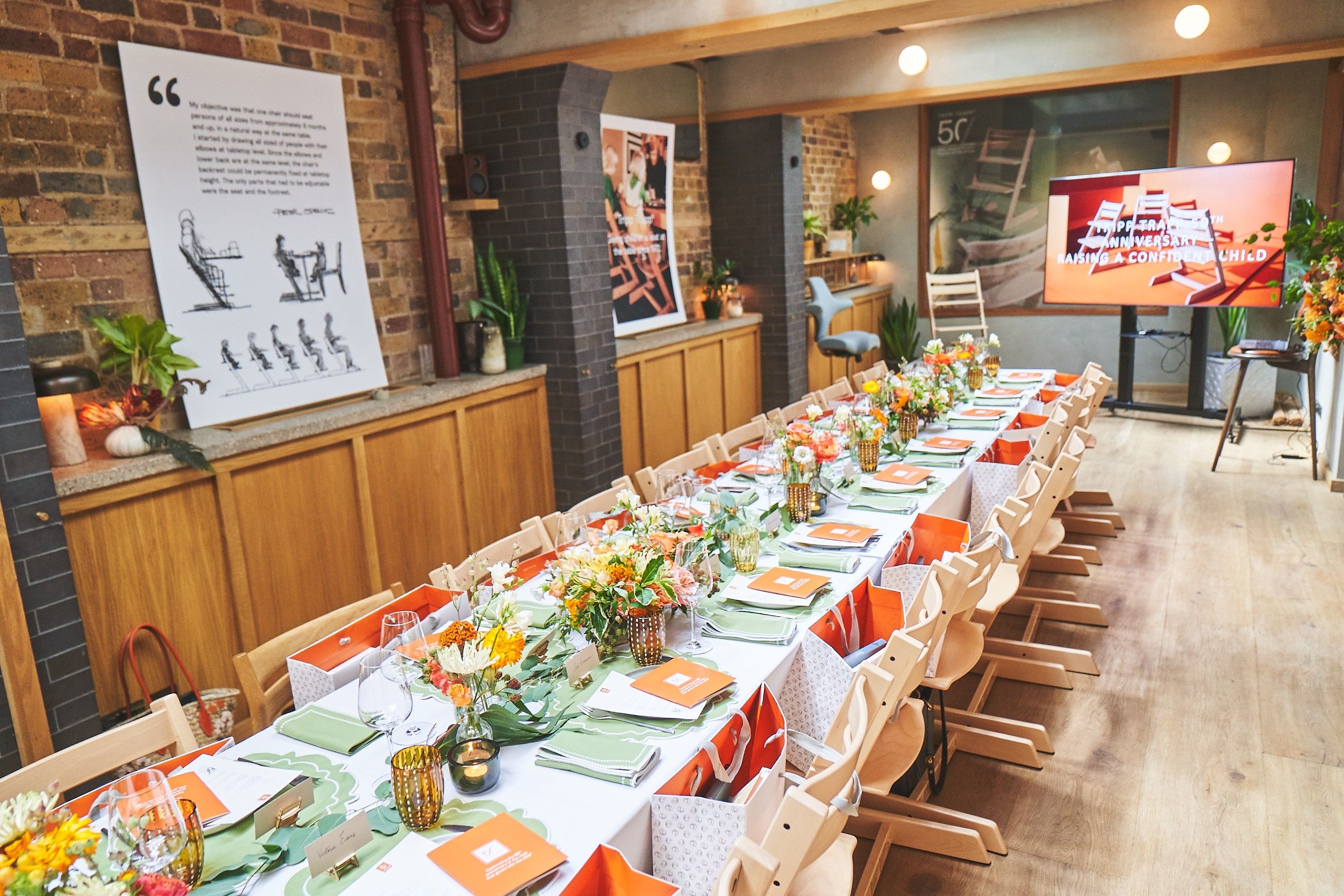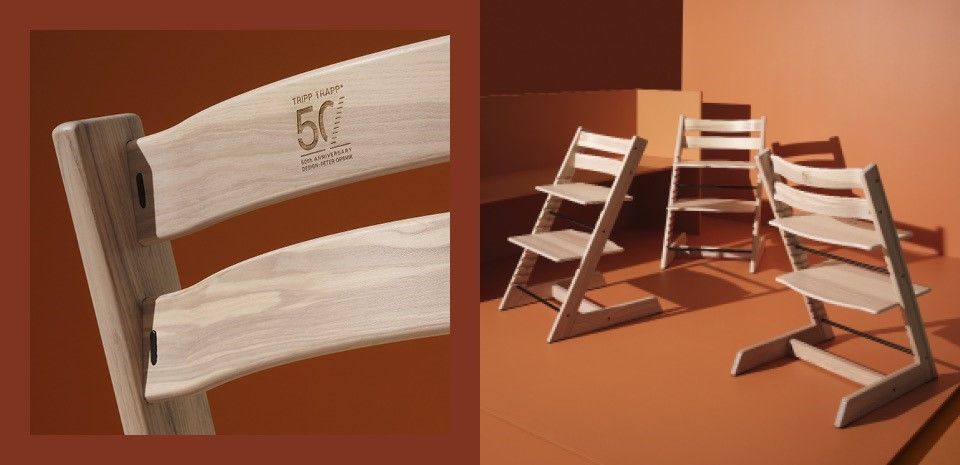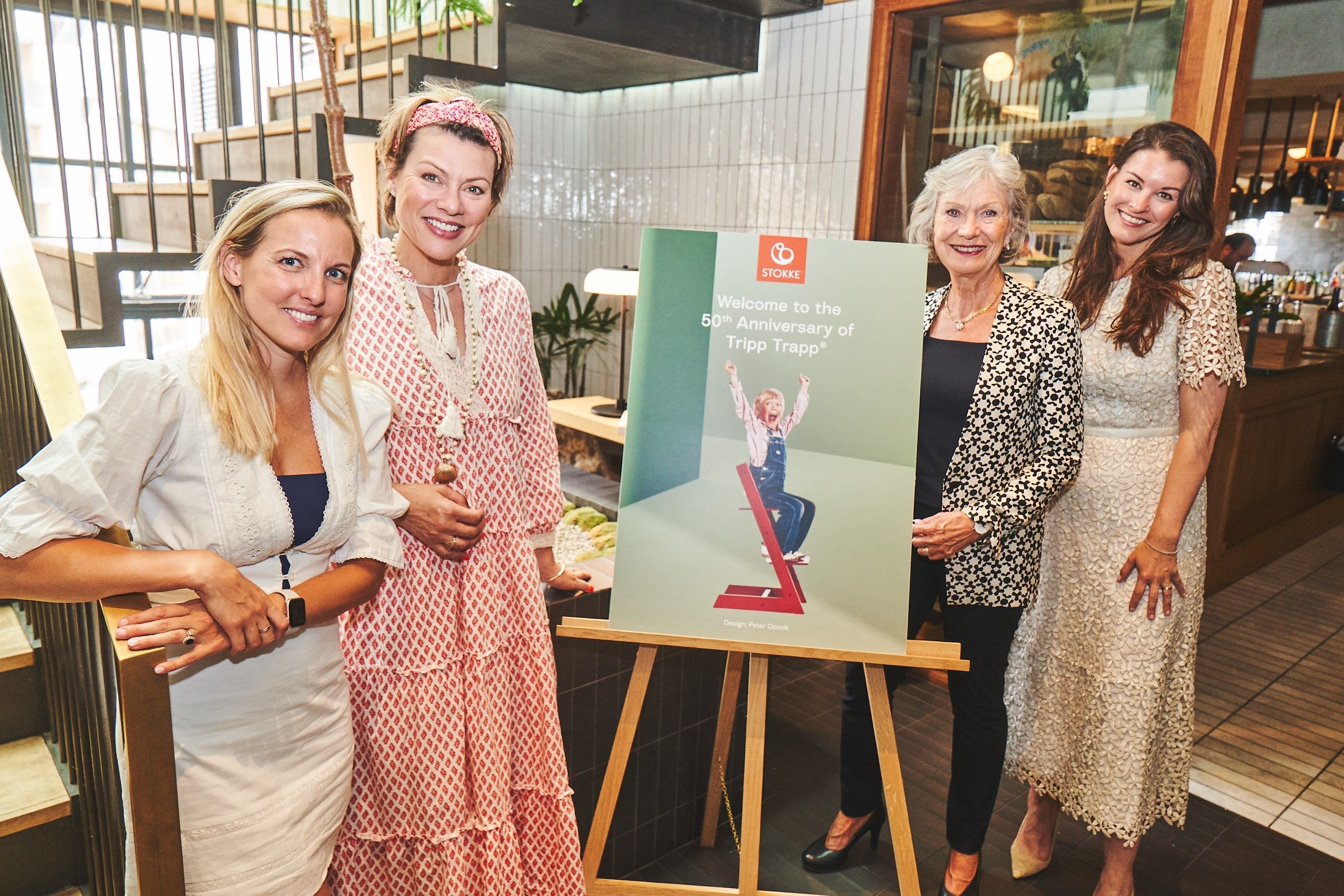Raising Confident children luncheon hosted by Kate Silverton to celebrate the 50th anniversary of Tripp Trapp
)

This year marks the 50th anniversary of the iconic Tripp Trapp chair. Designed in Norway by Peter Opsvik, and launched in 1972, millions of children around the world have since enjoyed a seat at the table. Though times have changed, the mystery of being a new parent hasn´t. By sitting together at the table with their families, children have been able to connect with the people that care about them most. It´s this connection that allows parent and child to get close, communicate and figure it out together. Marking this occasion, Stokke released a limited-edition collection, including Tripp Trapp Ash Mixed, Ash White and Tripp Trapp Cushion 50th Anniversary.

To celebrate the milestone of The Chair That Grows With The Child™, Stokke welcomed guests and experts, Kirsti Vandraas, Kate Silverton and Charlotte Stirling-Reed at Eldr for a Nordic Luncheon where our experts elaborated on the topic of raising confident children.

Kirsti, Kate and Charlotte shared their wisdom about the importance of movement, closeness and connection in early years and how parents can use their tips and tricks in everyday lives.
Kirsti Vandraas, project director of Peter Opsvik AS, emphasised on the importance of freedom of movement and correct posture for children. Kirsti’s top crucial tips include:
1. Empowerment
Children don’t need to be encouraged to move; they need to be empowered to move. That is the genius of the iconic Tripp Trapp chair. Adjustability and the design of the chair allow the child freedom of movement, good working heights and interaction with others. Children bounce around and thus need a solid base that enables them to move in the way they do. This is why Tripp Trapp stands solidly on the floor and has a sturdy seat and a spacious footrest that provides support for the child’s active movement. Kids need no encouragement to move around.
2. Life round the table
’Life round the table’ is an important feature in our upbringing. The child becomes part of a group, either at home or in childcare. On a Tripp Trapp chair, smaller children sit on a higher seat than the taller ones, and this lessening of height differences, improves interaction between children and adults.
The Tripp Trapp® chair gives them the ability to get in and out of the chair themselves. Thus, making them more independent and raising their confidence. Furthermore, by bringing the child to the table at the same level as others in that group, the children can learn from their surroundings and feel connected with others. Kirsti recommends the Tripp Trapp, as “it is the first highchair that can grow with the child, something that you can use from day one right up until adulthood.”
Kate Silverton, broadcaster, author of There’s No Such Thing as ‘Naughty’ and child therapist, points out that understanding the child’s brain development, the 'Lizard, Baboon and Wise Owl way' is key to ensuring your child’s future confidence, happiness and good mental health:
How? By using the 5 C's
- Curiosity - be curious about what’s really going on for your child in those more challenging, or ‘meltdown’ moments
- Connection - our children need to feel connected to us for good future mental health, so lots of play and 1:1 time are crucial. Using the Tripp Trapp chair is a great way to build connection with your child for eating or play - anything front facing, allowing for eye-to-eye contact and time spent together is brilliant for this
- Communication - using Wise Owl parenting helps us to communicate using our Wise Owl rather than our own baboon brain … (baboon to baboon only ends in a battle!)
- Calm - using STOP S’not helps us to remember that our children’s behaviour is not personal (even when it can sometimes feel that way!)
- Care - self-care for you is vital - understanding the stress response and how it can ‘block’ our natural empathic parenting is critical for us to know too - and helps us to remember our ‘C’s’ !
She recommends the Tripp Trapp Chair as it engages "being curious, connection, lots of play, one to one time, which is really critical for good future mental health and confidence. It brings your child right up to the table and at the right height to enjoy time around the table as a family together, learning and developing in those early years.”
Charlotte Stirling-Reed, children’s nutritionist, author of “How To Wean Your Baby”, focuses on the importance of nutrition and feeding, not just on the WHAT but also the HOW. Charlotte highlights two key terms when it comes to mealtime environments that are crucial to raising confident children, where the Tripp Trapp plays an important role. Commensality: the aspect of eating together with family and friends and Conviviality: the social aspect of eating, including socialising during meals and the pleasure of sharing meals and dishes together.
"When it comes to food, the kind of things we like tend to be what we are exposed to when we are young.” This is why Tripp Trapp is great, it brings children to the table allowing them to participate in the social act of eating together and experience the joy of sharing meals, at the same time exposing them to more types of food. Thereby, improving their relationship with food and allowing them to be more confident in their decisions about food.
Charlotte’s tips include:
- Don’t forget the SOCIABLE act of eating – forget the food & focus on the experience
- Avoid that mealtime STRESS – calm the environment BEFORE you put baby at the table
- Give THEM the control at mealtimes – mess, portions, what’s going in. It’s their call.
- Enjoy it yourself? If you’re not enjoying mealtimes (& letting them, see you enjoy it), how will they learn to enjoy it too?
- Keep it consistent, once you’ve nailed the mealtime environment. Similar times, same chair, same calming environment – this will make a big difference to smooth mealtimes.
